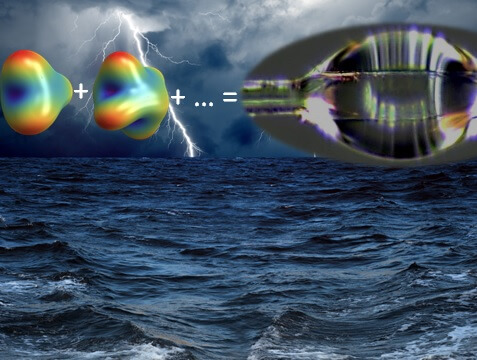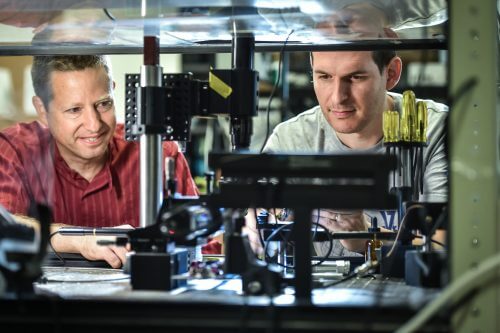A doctoral student in the Faculty of Mechanical Engineering at the Technion recorded the noise The self of a drop of water at rest

Water drops are common in nature, in everyday life and in many processes in industry and research laboratories. Most people think that a drop of water placed on a surface is a quiet and still object, but if we photographed a drop of water up close, really up close, and with the resolution of a single atom, we would discover to our surprise that its water surface is not smooth. In fact, the surface of the water behaves like a stormy sea in miniature.
The water on the surface of the drop is constantly moving, due to a dynamic called Brownian or thermal oscillation. The thermal movement of the water surface affects many processes and is responsible, for example, for the breaking of one drop into smaller drops.
Researchers at the Faculty of Mechanical Engineering at the Technion recently developed a method for measuring and recording the thermal movements in a droplet. The innovative method, which was published in the journal Optica, is based on introducing light into the drop. The light rotates inside the droplet 1,000 times and thus makes it possible to measure the fluctuations in the radius of the droplet with a resolution less than the size of a single atom.
Prof. Tal Karmon, who led the research together with doctoral student Shai Ma'ini, explains that "the number of revolutions of light in a drop is called Optical Finesse, and here as mentioned it stands at 1,000. This means that it is possible to monitor movements that are a thousandth of the wavelength of the light introduced into the drop. This separation capability is suitable for monitoring the thermal oscillation of the drop."

in the attached files, recorded by Shai Ma'ini in Prof. Carmon's laboratory, you can hear the thermal noise generated by the water drop and see the characteristic oscillation modes of the drop. "Beyond the scientific interest," Maaini explains, "there is potential here for the development of micro-devices whose walls are made of water, which may be useful in various contexts. For example, a device called a hybrid resonator, where light waves and water waves pass through each other, may allow an exchange of energy between the two types of waves. The drop in which water waves and light waves resonate can be used in a new type of detector that tests the reaction of the object being tested to several different waves. For example, we can insert a biological cell into a drop and determine, based on its response to light, water and sound waves, whether it is normal or cancerous."
According to Prof. Carmon, "there is a certain analogy here to the way the human body detects dangers - through a combination of several senses and not based on just one sense. For this reason, we call this future method a 'multi-sensory detector', in contrast to the current technology of a multi-frequency (multi-spectral) detector, in which the response of the object being tested to different frequencies of one wave is tested."
Shai Ma'eini completed a bachelor's degree (with honors) in the electrical engineering-physics track at the Technion and a master's degree in electrical engineering under the guidance of associate professor Yuval Ya'ish. In 2012 he returned to the Technion for doctoral studies. He recently won the Ministry of Science scholarship for doctoral students for 2017.
Prof. Tal Karmon completed his undergraduate studies in mechanical engineering and a doctorate in physics at the Technion. After a post-doctorate at Caltech, he moved to the University of Michigan, Ann Arbor, where he was an associate professor and then an associate professor. In 2013 he returned to the Faculty of Mechanical Engineering at the Technion as an associate professor. He is the recipient of the Eshkol scholarship, the Rothschild scholarship and the American Air Force award for a young researcher.
